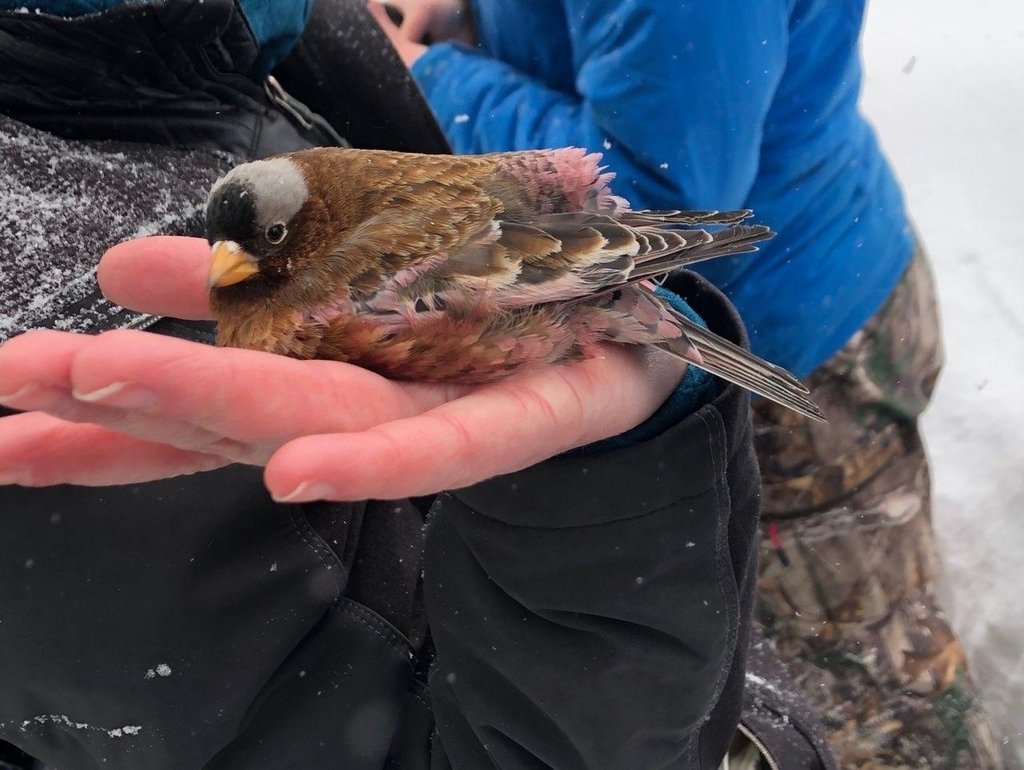Janice Gardner Receives Wildlife Award
Janice gathers materials to build simple structures that help restore unhealthy streams in the West. Photo by Leslie Roberts.
Janice Gardner, Conservation Ecologist at Sageland Collaborative, has received the "Award of Merit" from The Utah Chapter of The Wildlife Society. The honor signals exceptional achievements in wildlife work.
Janice has made notable contributions to not only Sageland Collaborative’s wildlife and land conservation work, but western conservation at large.
Among her accomplishments are:
To understand rosy-finch movement and well-being, Janice and other scientists attach bands to rosy-finches. These bands are tracked by special feeders across the West.
Establishing our project restoring degraded streams in the West
Developing regional work conserving rosy-finches with partners and volunteers across the West
Inspiring hundreds of community scientists to get involved with conservation for their local wildlife and lands
Launching our work supporting birds at Great Salt Lake in 2019
Furthering the dissemination of low-tech stream restoration methods in Utah through making Sageland Collaborative one of the foremost practitioners of beaver mimicry restoration
Bringing dozens of diverse partners and communities to our work, furthering our collaborative conservation strategy
Check out our interview with Janice below.
Did you know? Janice is the main photographer behind our images. Here, she is pictured at Great Salt Lake with her favorite subjects: birds!
What originally drew you to your conservation work at Great Salt Lake? What are you most excited about in the future of the project?
Looking at birds makes me happy! I love following their movements and find their pathways intriguing. It’s amazing—the long distances these tiny little light birds travel between the winter and the summer.
I am excited about our new shorebird surveys, which will connect Great Salt Lake to surveys across the entire Intermountain West and Pacific Coast. This gives us a data-backed snapshot of the movement and well-being of migratory shorebirds along the Pacific Flyway, which can support large-scale efforts to help these populations.
What has your work restoring degraded western streams looked like?
Before my time here, the stream restoration program was focused primarily on monitoring stream health in Utah. This was important to establish understanding of just how degraded streams are in the state. I furthered the program by adding implementation to the project—bringing in boots on the ground to do the work of restoring unhealthy sites.
Janice and others restore a degraded stream. Photo by Lisa Whitehead.
Through my time with this project, we have tied habitat monitoring with restoration actions across the state. For example, we’ve supported research on how stream habitat improvements influence carbon sequestration and how species respond to improved habitat.
I’m also proud to have linked our stream restoration program with our other projects, including our boreal toad and pollinator work. We’ve used stream restoration efforts to improve habitat for these species as well as big game, fish, birds, bats, and other wildlife. I’m proud of the work we do supporting migration corridors from many different angles.
How has your work on rosy-finches had an impact on the species and conservation in the region?
I’ve been excited to expand our rosy-finch work beyond the borders of Utah by establishing the Rosy-Finch Working Group. The group is comprised of 80 people who represent over 40 partners, including government agencies, academia, nonprofits, and others.
Janice tags rosy-finches as part of the project.
Working collaboratively to tackle conservation issues means we can address many different facets of issues. I’m proud to be part of such meaningful exchanges and outcomes in these large, impact-driven projects.
What does collaboration mean to you?
I love connecting as many entities and volunteers as I can to work toward our mutual love of wildlife. Uniting visions becomes easy when you gather around a deep passion.
What is your favorite part about working with wildlife?
I love working with the people who are also passionate about wildlife! I’m lucky to work with colleagues in many organizations who share a passion for wildlife and deep mission to conserve it. I’m also excited to be part of a unique team. We’re a really unique shop that is able to fill a lot of roles and niches that are needed to further wildlife conservation and management.
What would you say to starting wildlife professionals hoping to build successful careers?
Wildlife conservation is a work of passion. You’ll find that your mission drives you more than anything else in this work. If you’re a mission-driven person that loves wildlife, I’m confident you’ll find a good path forward!





